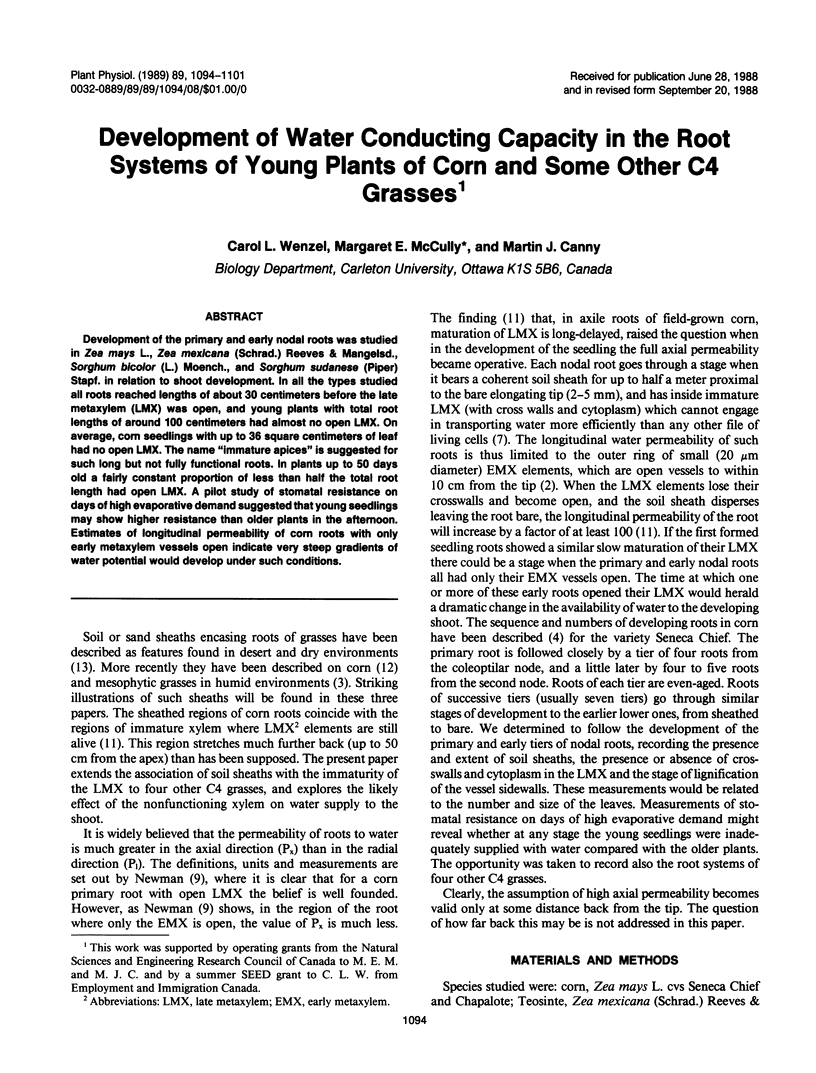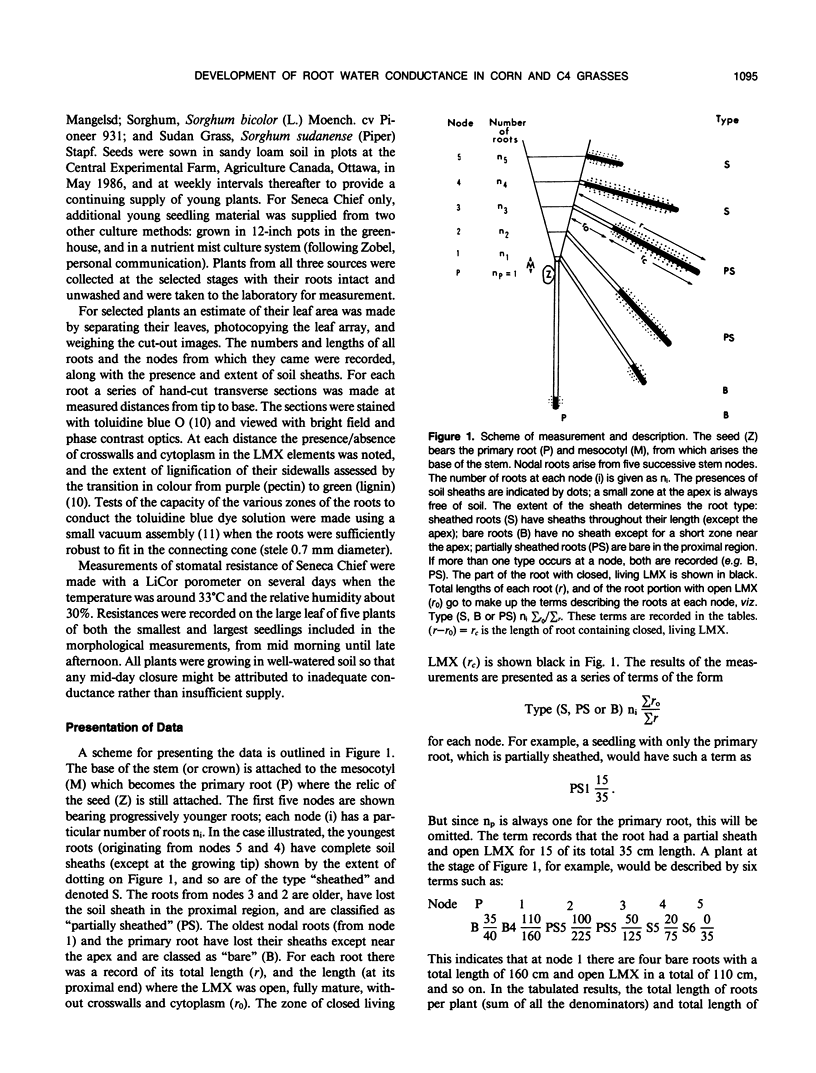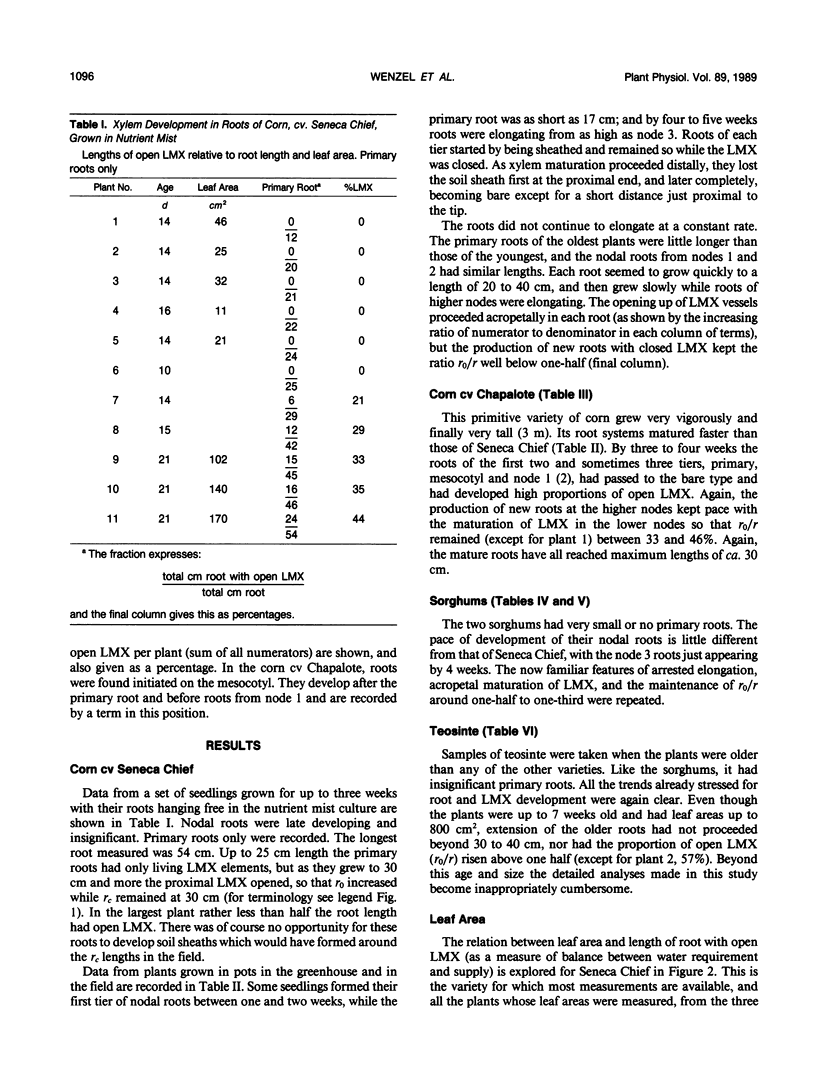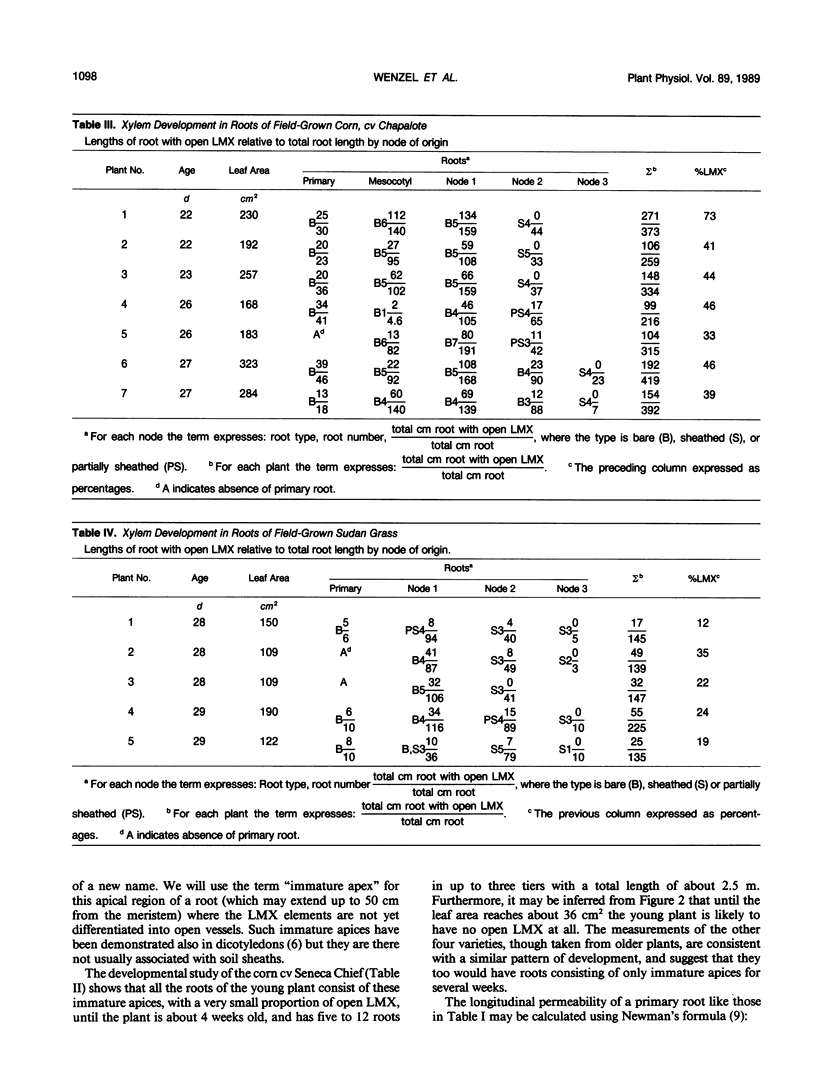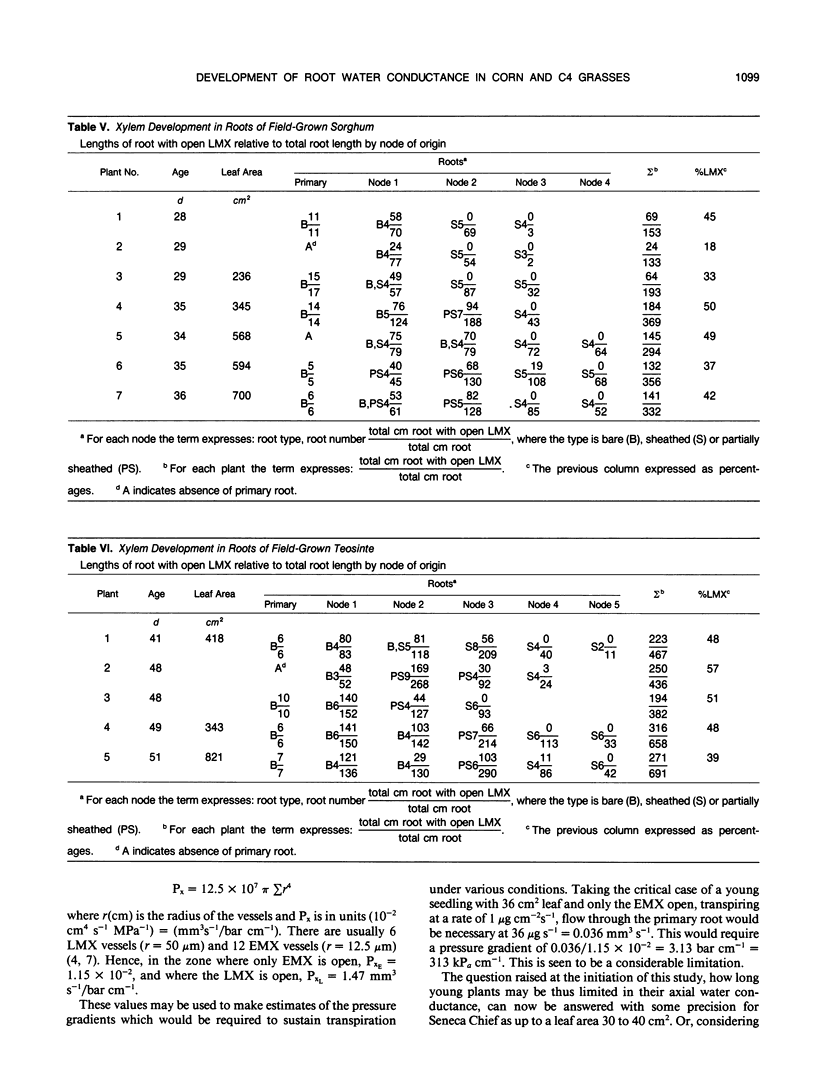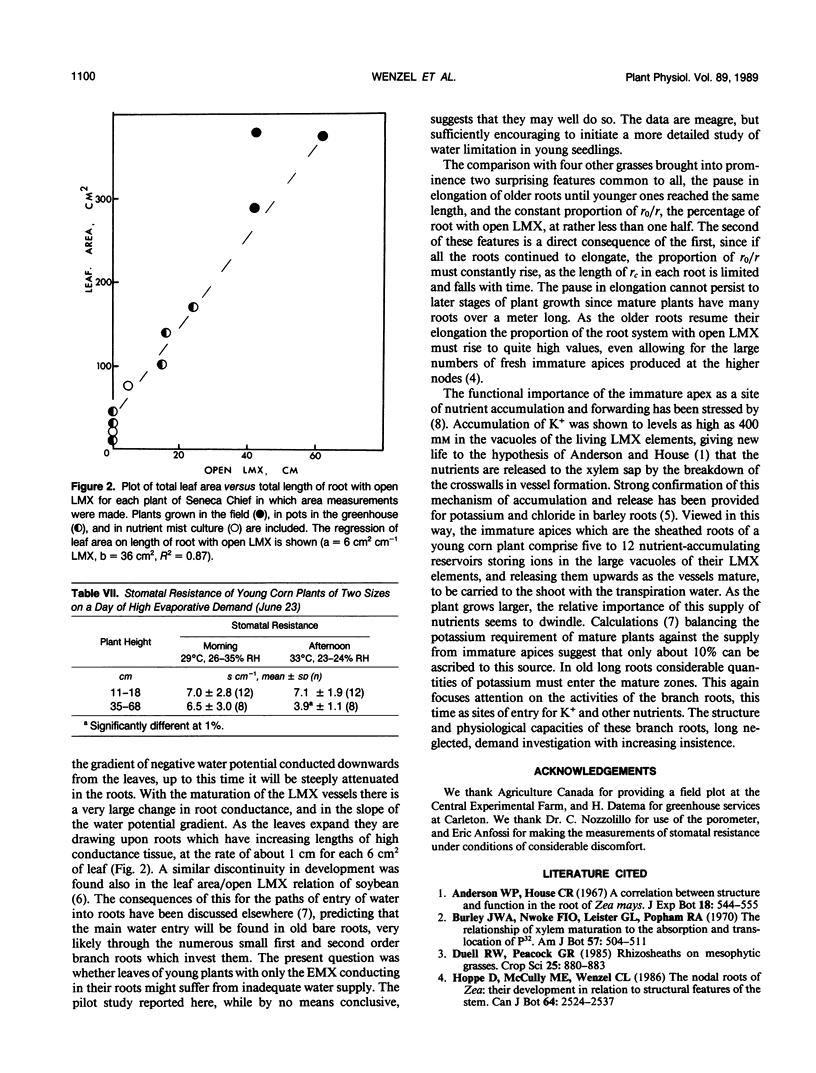Abstract
Development of the primary and early nodal roots was studied in Zea mays L., Zea mexicana (Schrad.) Reeves & Mangelsd., Sorghum bicolor (L.) Moench., and Sorghum sudanese (Piper) Stapf. in relation to shoot development. In all the types studied all roots reached lengths of about 30 centimeters before the late metaxylem (LMX) was open, and young plants with total root lengths of around 100 centimeters had almost no open LMX. On average, corn seedlings with up to 36 square centimeters of leaf had no open LMX. The name “immature apices” is suggested for such long but not fully functional roots. In plants up to 50 days old a fairly constant proportion of less than half the total root length had open LMX. A pilot study of stomatal resistance on days of high evaporative demand suggested that young seedlings may show higher resistance than older plants in the afternoon. Estimates of longitudinal permeability of corn roots with only early metaxylem vessels open indicate very steep gradients of water potential would develop under such conditions.
Full text
PDF